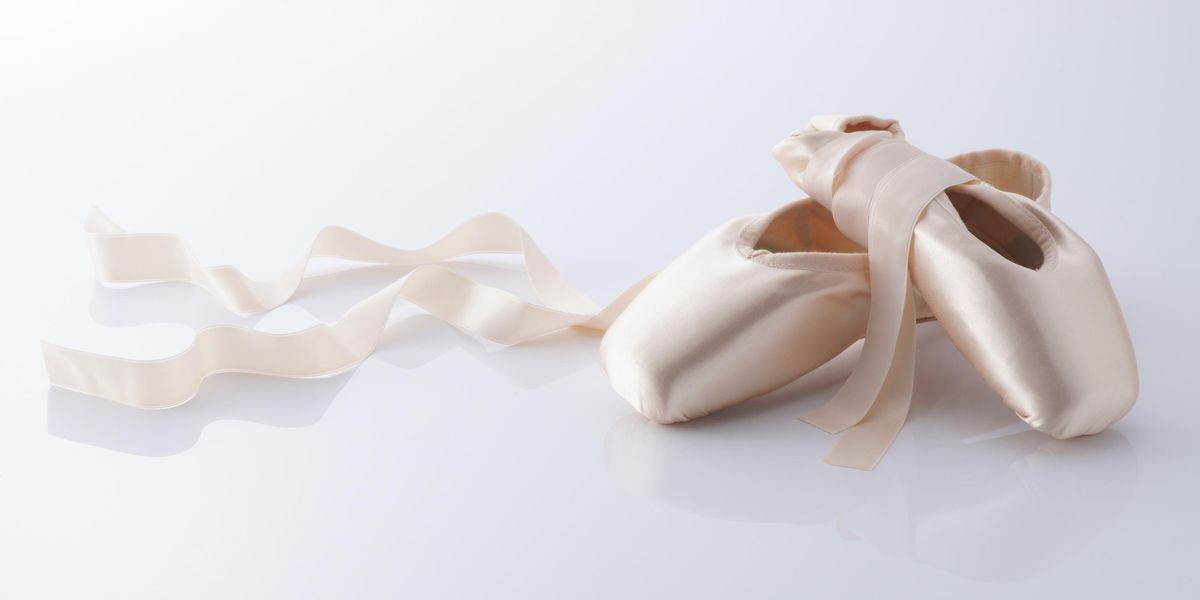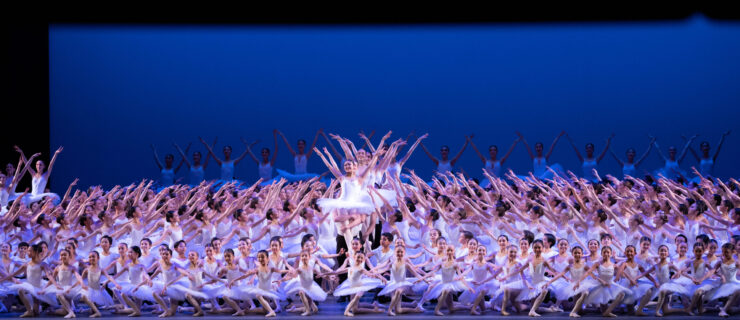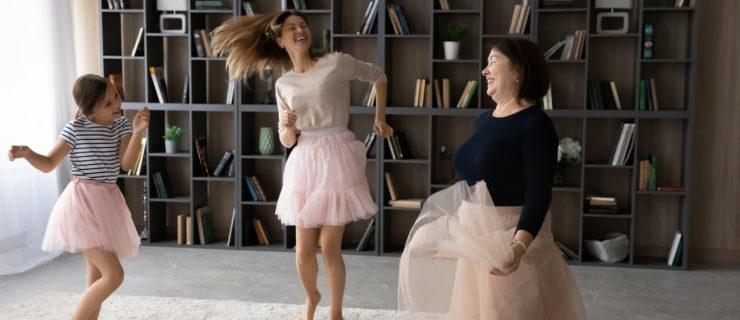What to Do When Your Dance Teacher Says You're Not Pointe Ready
Since the day you pulled on your first leotard, you have no doubt been dreaming of the day you would attend your first pointe shoe fitting. Going on pointe is a rite of passage as a ballet dancer, and the result of years of hard work.
But what happens if you are passed over for the opportunity when it feels like your time? It’s totally understandable to be disappointed and frustrated if your teacher doesn’t move you on pointe, but don’t lose faith in yourself. “I’ve seen a lot of dancers go on pointe over the years,” says Josephine Lee, professional pointe shoe fitter and founder of The Pointe Shop. “I don’t think I have ever seen a dancer who was held back from pointework feel like they were behind in the long run.”
Ideally, your teacher has laid out clear guidelines for what makes a dancer pointe-ready. But if they haven’t, there are some milestones that ballet professionals are looking for to give the green light for your first pair of shoes. Factors like your age, technique level, range of motion and strength all come into play. And the good news is that if going on pointe is a goal for you, there are proactive ways that you can get there.
Age
The “correct” age to begin pointe is a controversial one, and that is largely because being pointe-ready depends on so many different factors of physical and technical development. But there is a growing consensus that you can definitely be too young to dance on pointe safely. In most professional training schools, dancers don’t start pointework until age 11 at the earliest. In 2018 the Youth America Grand Prix updated its rules so that competitors should be 12 years old to perform on pointe. Dancers 10 years old and younger are not allowed to compete on pointe, and it is strongly discouraged for 11-year-olds.
For many, one concern for going on pointe too early is that if the student is not done growing, the growth plates in their bones are not fully closed. While this can certainly lead to injury, medical professionals are more concerned with injuries that can result in a student lacking the strength, range of motion and coordination needed to start safely twirling on their toes. Natalie Imrisek, a physical therapist who works with dancers in L.A., adds, “Dancers also need to have the maturity to have an understanding of how to care for their bodies and the hard work that they are doing.”
To Keep Improving
: Waiting is the hardest thing, but it’s the only real remedy here. Trust that your teachers are looking out for your best interest: They just want you to be safe and successful. Going on pointe too early can be frustrating, and even lead to burnout. Focus your attention on the rest of the pointe-ready milestones, and you will be a better dancer for it.
Coordination and Technique
Being developmentally ready for pointework happens for different people at different times. There are so many factors that contribute here—how long have you been seriously taking ballet classes? Maybe you have had a big growth spurt and are regaining the strength to manage your longer limbs. “Being developmentally ready means being able to really multitask with your body,” says Jennifer Milner, a Pilates instructor and ballet coach in Dallas. “With pointe shoes, we are adding one more thing you need to think about,” she says. “You’re learning how to balance differently.”
In class Milner looks for control in a student’s dancing to determine if they are ready for pointe. She wants to see a dancer who can do a clean single pirouette with a landing without hopping or falling down off of demi-pointe. She will also test a dancer’s proprioception (your ability to know where your body is in space) by having them stand in parallel and bring one leg up to a parallel passé. She asks them to hold the position without touching the working foot to their knee and without clasping their hands or putting their hands on their hips. “Can you do it for 30 seconds with your eyes open?” she asks. “Can you do it for 10 seconds with your eyes closed?”
To Keep Improving
: Practice, practice, practice. Make sure that your commitment to getting your pointe shoes is matched by your commitment to your overall ballet training. Are you taking multiple ballet classes every week? Are you committing yourself fully to the corrections you are receiving and working hard to improve? Don’t focus on pointework as a trophy—it will be a natural continuation of all of your hard work.
Range of Motion
The flexibility of the mid-foot and ankle was cited by Lee, Milner, and Imrisek as a primary challenge for young dancers being pointe-ready. “You need to be able to get your metatarsal in line with your shinbone when you point your foot to get on pointe safely,” says Imrisek. Milner will have dancers sit on the floor with their legs straight and point their feet. If you lay a pencil on your ankle pointed down to your toes, it should be pointing straight ahead or down toward the floor. If it is pointing up, you still have a range of motion challenge to overcome. Imrisek says that this flexibility is important because if you can’t get over on the box of the pointe shoe, you are likely to compensate with other parts of your body and end up injured. You are also much more likely to roll and sprain your ankle.
On the other side of range of motion is those dancers with very flexible feet and ankles—the banana feet we all want. But Milner warns that with great flexibility comes a greater need for strength in order to avoid injury. While the feet may look great in the shoes, these dancers can be at higher risk of sprained ankles and Achilles tendon problems, which can become recurring injuries. “The biggest predictor of having an ankle sprain is already having had an ankle sprain,” says Milner. The ligaments don’t go back after they have been overstretched.
To Keep Improving
: If you are lacking the range of motion in your ankles and mid-foot, don’t go reaching for the foot stretcher! Imrisek warns that doing so can overstretch the ankle, increasing the risk of sprains and causing Achilles and os trigonum issues. Instead, she suggests focusing on opening up the tissue in the mid-foot and the top of the foot. To do this, she suggests dancers get toe spacers like YogaToes, or lace their fingers between their toes to release the tightness. While your toes are spread, massage the top of the foot up toward your shins like you are pulling on a pair of pantyhose. To keep the added flexibility, she says to follow this up with some strength exercises, like piano toes.
Strength and Balance
“Think of pointework as a full-body experience,” advises Lee. “Often the dancer incorrectly only focuses on their feet and their ankles. But you have to be strong in every part of your body in order to be successful.” Lee is looking to see if a dancer can hold a relevé on demi-pointe without shaking or wobbling, which requires the whole body to be engaged to be done successfully. A lot of this strengthening happens naturally in class, but adding a cross-training routine will make you a stronger dancer all around. Milner suggests that you skip the crunches for core strengthening. “We don’t often dance in a crunched position, so we want to learn to strengthen our trunk and maintain it in a neutral position,” she says.
To Keep Improving
: Most of Milner’s students prepare for class every day with the same favorite exercise called “toe taps.” Practicing your relevés in both turned-out as well as parallel positions will help with needed calf strength.
Both Milner and Imrisek have seen dancers get injured after being on pointe before the time is right. Sometimes these are immediate injuries, like sprained ankles and stress fractures, but for others, it results in nagging injuries that plague dancers for the rest of their careers. It is hard to wait, but you need to invest in yourself and the long game. If you still feel confused about why you didn’t make it on pointe this year, Milner says that it is completely fine to respectfully ask your teacher for a meeting to discuss it at a time that is convenient for them. “You can say, ‘I understand that you don’t feel that I am ready for pointe, so what can I work on so that I can achieve that goal?'” By working with your teacher to create tangible goals for yourself, you can move forward with support knowing how to get there.




